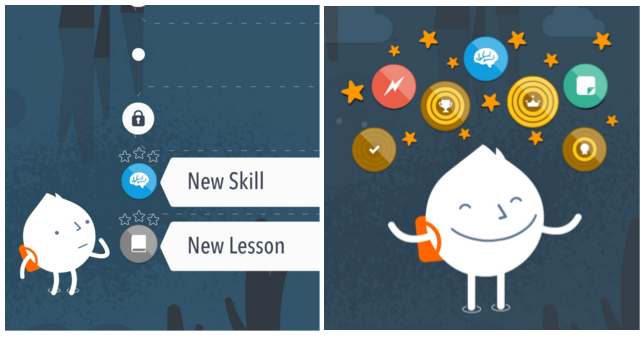My mom smoked Camels until we could barely see through the sticky car windshield. I’d hang my head out the back window and sing, even on freezing winter days, just to avoid the clouds of smoke from her and my dad who liked to puff on cigars. Then mom developed serious emphysema, further cementing my dislike of the pernicious habit. Unfortunately, my feelings were not passed on to our youngest daughter, Leah, who’s been smoking since college. (See her picture looking super cool, which is why I suspect she started smoking in the first place.) She’s tried to quit, but nothing sticks. Patches, vaping…
So that got me thinking about all the exercise, diet, and smoking apps out there that try to help us modify our behavior, and I wondered if any of them were effective. I’ve noticed people starting to talk about how many steps they took that day, or what their calorie intake was. So much information is available to us now, thanks to wearable devices, sensors, and apps. But is information enough to make us change our lifestyle or behavior? Research isn’t very encouraging.
For one thing, information without an emotional punch doesn’t have an impact, certainly not enough to make us change ingrained habits. For example, looking at the Starbucks menu on the wall, I can see that my favorite salted caramel mocha frappuccino is a mere 510 calories. I order it anyway. Perhaps if they told me that it would take 3 hours of rapid walking to burn off those calories, I might pause first. One can only hope.
The reason why information alone doesn’t seem to change behavior is due to something known as the affect heuristic. The affect heuristic refers to people’s tendency to base judgments on emotion or mood instead of the facts. Information and stats don’t change behavior; people change their behavior when they feel something.
So what’s an app designer to do? Increasingly, designers are using “gamification” techniques to motivate users to achieve long-term goals. But what does it mean, to “gamify” an app? And does it work?
Turning a tedious task into a game, in order to encourage engagement and retention, requires various game elements be integrated, including: 1) Objectives (short-term and long-term), 2) Rules, 3) Players/Characters, 4) Choices and Interactivity, 5) Feedback, and 6) Emotional Reactions and Rewards. When done correctly, gamification works. However, research also shows that you cannot simply add a point system or achievements to a task to gamify it successfully. Gamification might sound easy and fun, but it must be implemented systematically and integrated fully, to improve outcomes.
Ok, with that background information, let’s return to smoking cessation apps for daughter Leah. First up, Kwit, a popular app, which uses several techniques to help users stop smoking. In Kwit, the user earns points and achievements in multiple categories, based on self-reports.

Kwit provides feedback on real-life progress, e.g., how many days since the last time you smoked, Users can even request motivational cards. (See “Stand firm” below.)

While all of these features are fine, the question is if points, achievements, information, and encouragement are sufficient to motivate the user to quit smoking? I doubt it. If you look at the type of feedback provided, it doesn’t translate the numbers into something that would be more meaningful and potentially have an emotional impact. In addition, a key to successful gamification is abstraction of the problem, often through the use of story and characters. Kwit includes a point system and the ability to share successes on social media, but no narrative.
For comparison, let’s look at an app in development by Smashing Ideas called Learn to Quit. It’s designed specifically for the mentally ill (the first of its kind), but according to what I’ve seen from the website and video demos, it could be used by anyone. In fact, based on the information we have so far, Learn to Quit seems like a really good example of how to gamify the smoking cessation process.

Images from Learn to Quit
Learn to Quit utilizes Acceptance Commitment Therapy to help users learn the best techniques for quitting. The user plays a character and travels down a path through “the swamp of urges.” Learn to Quit has achievements and statistics like Kwit does, but it applies gamification much more successfully. Here’s a summary from the website:
“As the user navigates their journey through a “swamp of urges,” they move through modules where they are taught lessons about how to be mindful and change their psychological relationship with them. As they master each lesson, new modules are unlocked. These intrinsic motivators are reinforced extrinsically as well through a financial tally showing how much money a user has saved by reducing their cigarette consumption.”
Another important difference between the two apps is that Learn to Quit continually reminds the user of his or her intrinsic motivators for quitting. Interestingly, people are more likely to stay motivated long-term when their motivation is internal rather than external. In fact, externalizing rewards for an already-motivated person is a bad thing because the external motivator replaces their internal motivators. This is a big problem with the gamification of tasks like smoking cessation or losing weight: motivated people might actually become less engaged as a result of an external point system!
The Learn to Quit app won’t be launched for a while; the developers are working with the University of Washington to test its effectiveness in clinical trials. It can’t come too soon for Leah!
